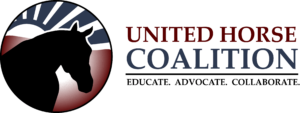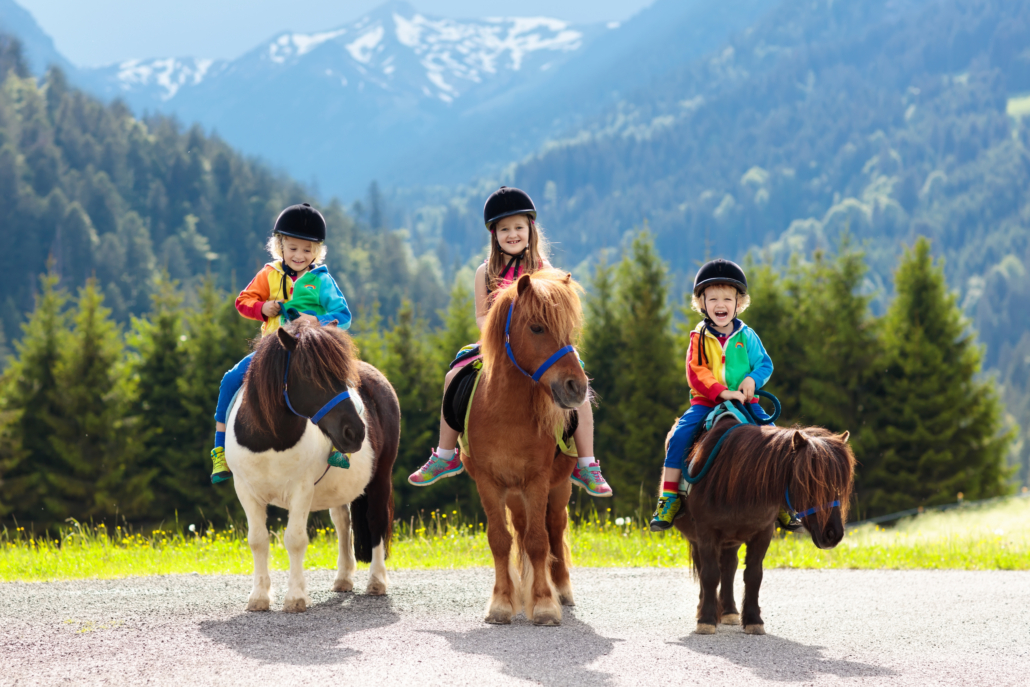
Kids riding pony in the Alps mountains. Family spring vacation on horse ranch in Austria, Tirol. Children ride horses. Kid taking care of animal. Child and pet. Little girl and boy in saddle on pony.
Owning a horse is a privilege that carries with it many responsibilities on the part of the owner. Today’s domesticated horse depends upon its owner to provide all of its basic needs for survival and good health. No matter what sort of environment a horse will occupy, a horse will require varying degrees of attention from the owner or someone else knowledgeable about proper horse care. The enjoyment of horse ownership depends heavily on the horse’s health and well-being. In return for the privilege of horse ownership and the enjoyment that brings, the prospective horse owner must not only make a substantial commitment of time to care for their horse but they must also be prepared to make a substantial financial commitment to provide for the needs of the horse.
NUTRITION
Proper nutrition is an everyday consideration of horse management and is essential to every horse engaged in any activity. The proper feeding of horses involves knowing the nutritional needs of the horse and providing for this need through the provision of suitable feedstuff. It is always a good idea to check with your veterinarian or an equine nutritionist if you have questions regarding the nutritional needs of your horse. Proper feeding of horses means attention to detail. The horse’s nutritional requirements are influenced by the following factors: the size of the animal, the environment in which the horse is kept, the age of the horse, the type of use or activity, and individual metabolic needs and characteristics. It is important that horses be provided with feed regularly and that they have adequate access to clean, fresh water at all times.
Water is an essential nutrient that is necessary for horses to maintain normal bodily function. Horses are best given water free-choice or they should be able to drink their fill at least twice a day. Most horses will drink 5 to 10 gallons of water per day with factors such as hot weather, exercise, and lactation causing a significant increase in water consumption. When horses are given inadequate access to water, they become dehydrated and become more susceptible to a variety of health problems, such as weight loss, colic, and kidney disease.
Since the horse is a grazing animal, the basis for all horse diets should be hay or pasture. Good-quality forage alone can meet the maintenance requirements for most horses. In many cases, horses will not only maintain weight but can make slow body weight gains when fed an all-forage diet. Horses should be fed free-choice hay or pasture; if this is not possible they should receive at least 1 to 1.5 percent of their body weight in forage per day, which is 10 to 15 pounds of hay or pasture grass per day for a 1,000-pound horse.
Physical activity will, of course, increase the nutrient requirements of the horse and may necessitate the addition of concentrate to a basic forage/roughage feeding program. A variety of grains are utilized for the concentrated portion of the diet. The most common grains are oats, corn, and barley. The mixed grain diets are readily available from feed and farm supply stores and should be fed according to the manufacturer’s recommendations.
As a general rule, the amount of concentrate should not exceed 30 percent of the total amount of feed being fed and it should be divided into at least two feedings per day. The grain is used to supplement forage to provide the energy and other nutrients needed for faster weight gains, growth, increased milk production, and high levels of athletic activity.
If your horse is not on grain, or if the grain you feed does not include trace minerals, you may want to provide your horse with a trace mineral block or salt lick.
It is interesting to note that horses can not vomit or regurgitate food, so if they overeat or eat something poisonous, vomiting is not an option. They also do not have a gall bladder which makes high-fat diets hard to digest or utilize. If possible, horses should be allowed to graze ideally up to 16 hours a day
SHELTER
Horses can adapt to a wide variety of environmental extremes if they are acclimated and have adequate feed and water. Horses with free access to shelter will often choose not to use it when it seems logical they would do so. Acceptable shelter may be natural, such as trees or rock formations, or constructed, such as sheds or barns. Horses do benefit from shelter, especially if it serves as a sunshade and windbreak.
The shelter should be of adequate size for the number of horses using it to avoid fighting and injury among the animals. Individual stalls in a barn should be large enough for the horse to turn around in and lay down in. A 12-foot by 12-foot stall is large enough for all but the largest horse. The shelter should be tall enough for the horse to be able to stand with its head held in a normal position without its ears touching the ceiling. The shelter should be adequately ventilated to help prevent respiratory tract irritation and should be free of hazards that might cause injury. Finally, it should have good footing/traction and be well-drained.
Horses should be given the opportunity for daily exercise. If the horse is kept in a stall or small paddock, it should be exercised daily, weather permitting, either by being ridden or by being turned out in a large paddock, arena, or pasture. If horses normally live in large paddocks or pasture, they will generally receive adequate exercise on their own.
Horse owners should use whatever fencing is adequate and safe to secure the type of horse they own. (i.e. Stallion vs mare, gelding, foal, vs, mini horse.) This can vary in types from wood, to electric. Wire fencing is a poor choice unless specifically designed for horses to prevent a horse from kicking a foot through, or sticking its head between and becoming entangled.
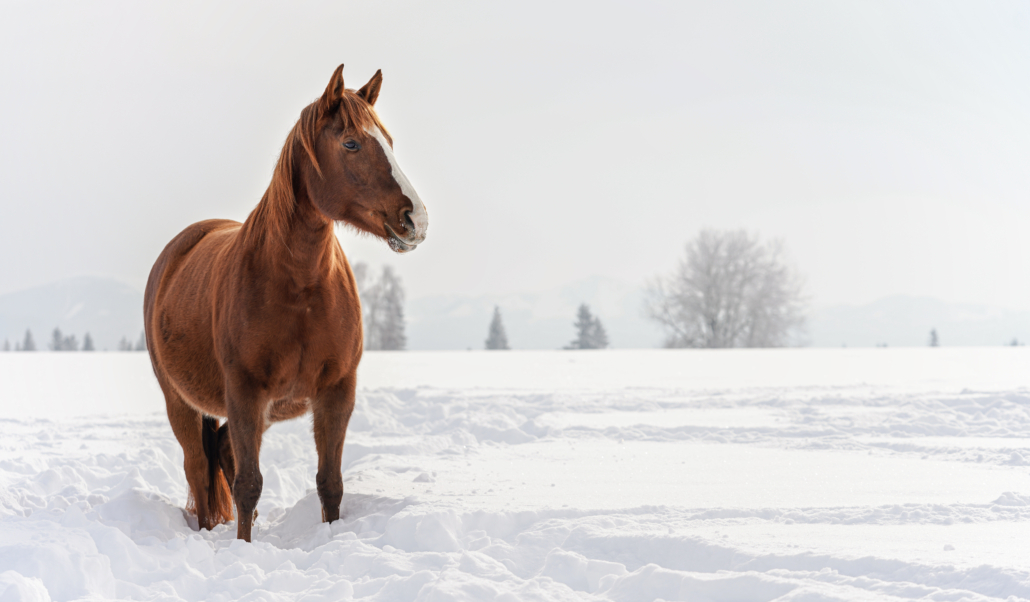
Dark brown horse wades on snow-covered field, blurred trees in background, space for text left side
COLD WEATHER TIPS:
First and foremost, it is important to increase the amount of hay (free choice) in a horse’s diet. Hay allows for an increase in hindgut fermentation, thereby allowing for an increase in their overall body temperature through the production of energy. It is the single most important tip to keep your horse warm when the temperature drops. The physical aspect of eating and moving will keep them far more comfortable than any blankets we could offer!
Secondly, horses and livestock must have access to water at all times. This is most easily done through the use of a water heater to ensure access to fresh water 24 hours a day. If the use of a water heater is not feasible, then access to water must be allowed either by offering water to the animal throughout the day, or a
running stream. It is imperative that you not assume a horse knows how to break through the ice of a bucket.
Should you blanket your horse? That is a question to be treated on an individual basis. Below are some examples of situations in which it might be preferable to blanket your horse.
- your horse is visibly uncomfortable or shivering in the cold weather
- your horse is older, weak, ill, or recovering from an illness
- your horse is very young
- your horse is clipped
- your horse is being shown or ridden consistently
- your horse does not have a sufficient winter coat
- your horse was from a warmer climate and is now in a cooler climate
Blanketing however does not come without a price. Once a decision is made to blanket your horse, you must continue it throughout the season. It is important to monitor a blanketed horse closely. If the horse becomes too warm beneath the blanket, it can cause sweating, and if not caught, the horse can become chilled. Blanketing a horse also modifies their own protection from the elements – their winter coat. It is also important that the blanket be removed periodically to ensure the horse has a proper body condition. Too often people do not realize a horse has become skinny beneath a winter blanket. If the tips above are adhered to, a blanket can become an appropriate alternative to their natural winter coats.
For those horses that are of good weight, and have grown in a good thick winter coat, not blanketing is and can be the healthiest option. Whether or not you choose to blanket, horses and livestock need access to shelter from the elements.
Appropriate shelter must be provided at all times. This allows a horse to have shelter from the elements and wind chills. Appropriate shelter can be something as simple as a three-sided shed, to a stall, to in and out situations. Please note, that you must have enough shelter to allow each horse access without being chased off or in jeopardy of being kicked or bitten. The horse is the best monitor of their comfort level and will use their shelter when needed. The more they can move around, the better they can generate heat.
In the end, it is the horse that is the best judge of its happiness and comfort. It is up to us to listen to those cues and ensure we do what is best for each individual, blanket or not.
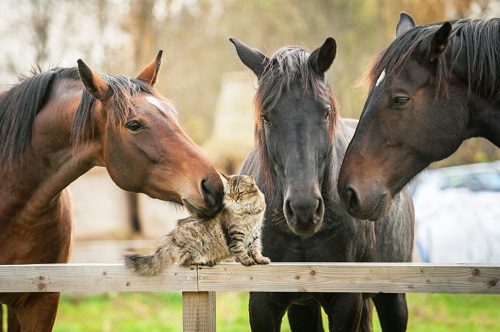
HEALTHCARE:
Horse owners should engage the services of both a licensed veterinarian with experience in caring for horses and a farrier. Horses, like all animals, need regular, preventive health care as well as veterinary care for health problems as they arise. Horses should be observed by the owner or those caring for the horse at least once a day or more often during high-risk periods such as seasonal changes, the introduction of new animals, or near foaling time. All horses should have a preventive health care program designed to meet the specific needs of the horse and be appropriate to the facilities and environment.
Increased horse population density requires greater attention to disease prevention. The types of vaccinations, deworming programs, and type of dental care should be determined by the veterinarian in charge of the horse’s health care. Vaccinations are administered at least annually and often more frequently depending on the risk of exposure to infectious diseases. Horses are exposed to parasites in their environment regularly, so deworming protocols will involve year-round administration of anthelmintics as determined by the veterinarian, as well as manure and pasture management to help reduce the level of exposure. The horse’s teeth and oral cavity should be examined at least annually. Dental abnormalities should not be neglected as they will interfere with normal eating habits and adversely affect the overall health of the horse. Dental care should be performed by a licensed veterinarian or under veterinary supervision.
All horses require routine hoof care. This may range from simply trimming the hooves to complex corrective shoeing procedures. All horses require some type of hoof care at least every two to three months throughout the year, and more frequently if they are shown, in order to maintain the health of the foot. The frequency of required hoof care will depend on such factors as age, season, nutrition, environment, management, and injury. A farrier will normally be employed to do this work and is the one to advise what the needs may be.
LIFESPAN
It is not uncommon these days to hear of a spry 40-year-old pony, and we too hope our own will live to such an extent. Whether or not a horse will have the capability and chance to live this long depends on many factors – genetics, a good home, veterinary care, and a bit of good luck. We generally find that horses begin to show signs of aging in their mid-teens. If they were living in the wild, disease, poor dentition, predators, and other mishaps would probably lead to a natural life span of 12 to 18 years.
If we assume that a horse does not suffer a catastrophic event, such as colic or fractured bones, it is reasonable to expect that a horse will live into his 20s, and many will reach their 30s. Most horsemen consider a horse as old or aged when they reach 20 years of age. According to some references, the oldest horse lived to be nearly 50 years of age. Good dental and other veterinary care, good nutrition, and regular exercise will help a horse to live as long and as healthy a life as possible.
